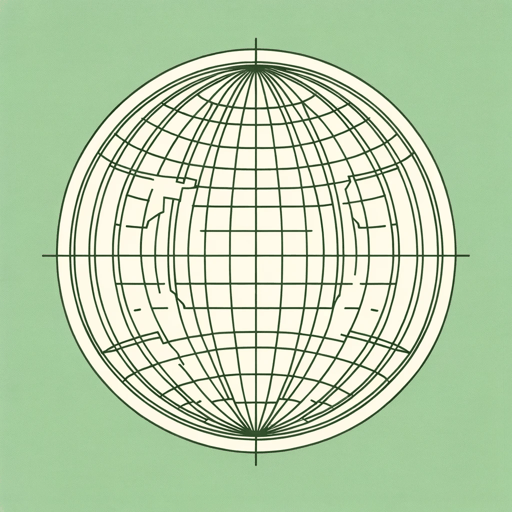56 pages • 1 hour read
Edward SaidCulture and Imperialism
Nonfiction | Book | Adult | Published in 1993A modern alternative to SparkNotes and CliffsNotes, SuperSummary offers high-quality Study Guides with detailed chapter summaries and analysis of major themes, characters, and more.
Summary and Study Guide
Overview
Culture and Imperialism is a nonfiction book published in 1993 by the Palestinian American author and academic Edward Said. Originating from a series of lectures that Said delivered in 1985 and 1986, Culture and Imperialism is an expansion of the ideas set out in his groundbreaking earlier work, Orientalism. Considered one of the founders of the field of post-colonial studies, Said looks at how the formerly colonized margins influence the metropolitan centers, and vice versa. He argues that the project of imperialism undergirds virtually every interaction between the West and the rest of the world. The exchanges between Britain and India, France and Algeria, and America and everywhere else (as the world’s last superpower, in Said’s view) provide him with cogent points of analysis. In what was a radical idea at the time, he also posits that culture itself bolsters the project of imperialism in ways both obvious and subtle, and that culture and imperialism are inextricably linked in myriad ways. He is especially concerned with the novel and other literary cultural products, revealing how works seemingly removed from the process of colonialism are actually intimately connected to it. Ultimately, Said lays the groundwork for a truly post-imperial world that moves beyond nationalism and essentialist notions of identity to a migratory kind of liberation from these authoritative narratives. He believes that the function of the scholar, or the public intellectual, is to actively engage with the real world to establish a more equitable discourse without the use of conventional prejudice which gives rise to the inevitable conflicts that are the hallmark of imperialism. All quotations are taken from the First Vintage Books paperback edition, published in 1994.
Summary
As Said acknowledges in the introduction, “this book is an exile’s book” (xxvi). A Palestinian-born Arab educated in the West, Said has a diverse perspective from which to investigate the long history of imperialism and its manifestations within culture. Instead of viewing the idea of exile as “something sad or deprived,” Said sees it as “belonging, as it were, to both sides of the imperial divide [which] enables you to understand them more easily” (xxvii). He is uniquely positioned to examine the ways in which empire works both within the metropolitan centers of power and on the colonized, disempowered margins. He envisions a post-imperial moment wherein culture—instead of consolidating and authorizing Western dominance—bolster notions of hybridized identity and global community, rather than national community.
In Chapter 1, “Overlapping Territories, Intertwining Histories,” Said reveals how the project of imperialism shaped geography and history within both colonizing and colonized territories. As examples, he cites London and Bombay (modern-day Mumbai), and Paris and Algiers. In these cases, both the metropolitan center and the colonized margins have been explicitly created and ideologically imagined through the imperial process. Said also argues that culture is inextricably bound up with imperialism; cultural productions, such as novels, are imprinted with the geographical facts and rhetorical power of imperialism. Thus, in Joseph Conrad’s Heart of Darkness, the reader recognizes that the narrator Marlow both critiques the dehumanizing project of imperialism and implicitly supports it. He can see no other alternative, so embedded is imperialism into the heart of European culture. The novel form itself rises alongside the growing empire: These are two distinct yet interconnected, forms of authority. Said wants to clarify, however, that the imperial metropolis, no matter how dominant, is utterly dependent on the margins for its power. He writes,
The authority of the observer, and of European geographical centrality, is buttressed by a colonial discourse relegating and confining the non-European to a secondary racial, cultural, ontological status. Yet this secondariness is, paradoxically, essential to the primariness of the European (59).
Without the marginalized, colonized Other, there can be no superior, dominant, European Self. Said wants to read the literary canon with these interconnected histories in mind, which “entails reading the canon as a polyphonic accompaniment to the expansion of Europe” (60).
In Chapter 2, “Consolidated Vision,” Said details further his procedure for “contrapuntal” reading—that is, reading against the central themes and actions of the text to discover “what is silent or marginally present or ideologically represented (I have in mind Kipling’s Indian characters) in such works” (66). He uses several canonical works to illustrate his approach: Jane Austen’s Mansfield Park, written even before the high imperial age; Rudyard Kipling’s Kim, centrally concerned with England’s Raj in India; Giuseppe Verdi’s opera Aida, with its European vision of Egypt and, by extension, the “Orient” as a whole; and Albert Camus’s oeuvre, which dramatizes the psychological struggles of the European Self against the backdrop of its colonized territory. In each of these works, Said’s reading reveals how they are implicated in the project of imperialism. From the English estate’s material dependence on a sugar plantation in Antigua, to the use of the vast and unknowable lands of Others as a blank slate on which to inscribe European identity, Said highlights the ways in which empire undergirds cultural productions, as they, in turn, bolster the imperial mission.
In Chapter 3, “Resistance and Opposition,” Said turns his attention to the very real fact of resistance to empire in all its forms throughout its history. Empire was never a settled fact; it was never the homogenizing force that its architects once believed it to be. Said writes, “There Are Two Sides” to every narrative, and imperialism is no exception. He returns to the idea of “discrepant experiences,” which he discusses in the first chapter, to remind the reader that “imperialism and its opponents fought over the same terrain, contested the same history” (199). It is the experience of that terrain and of that history that is so vastly different between the two sides. In the post-colonial moment, the experience of the “native” in the formerly colonized territories has finally been given voice. Said uses literary authors and cultural critics alike to chart this transformation. He critiques the movement from colonization to nationalism, which essentializes—rather than acknowledges the hybrid nature of—identity and mimics the project of imperialism, calling instead for a turn toward what he terms “liberation”: “This movement [away from the history of domination toward the actuality of liberation] resists the already charted and controlled narrative lanes and skirts the systems of theory, doctrine, and orthodoxy” (281). Moreover, liberation calls for the acknowledgment of a global community and the awareness that the world is and has been deeply interconnected from the time of imperialism to the present.
In Chapter 4, “Freedom from Domination in the Future,” Said grapples with the world’s remaining superpower, America, whose ascendancy was virtually unchallenged as he composed the book in the early 1990s. He observes the ways in which the rhetoric of empire continues to be employed in the contemporary era, particularly in the buildup to the Gulf War of 1991. Imperial tropes about marginalized cultures and peoples abound. These tropes dictate that the Other—in this case, the Arab—must be taught, tamed, and bound to an American vision of freedom and the rule of law. Now, an American media apparatus with international scope is on hand to perpetuate this neo-imperial project. His dismay with regard to the public intellectual’s silence or complicity in this project is palpable, and he calls upon academics and critics to “challenge orthodoxy and authority.” To do this, these thinkers and writers must move beyond the limitations of nationalism and essentialized identity and instead embrace a more liberating notion of identity that contains multiple facets—what the reader might call “intersectionality” today. Ultimately, Said argues, “[n]o one today is purely one thing” (336). And no culture today lays claim or should lay claim to singular authority, superiority, or dominance over another. The acknowledgement of these truths is where a truly post-imperial future awaits.
Featured Collections
Asian History
View Collection
Books & Literature
View Collection
Challenging Authority
View Collection
Colonialism & Postcolonialism
View Collection
Colonialism Unit
View Collection
European History
View Collection
Middle Eastern History
View Collection
Philosophy, Logic, & Ethics
View Collection
Politics & Government
View Collection
Power
View Collection


